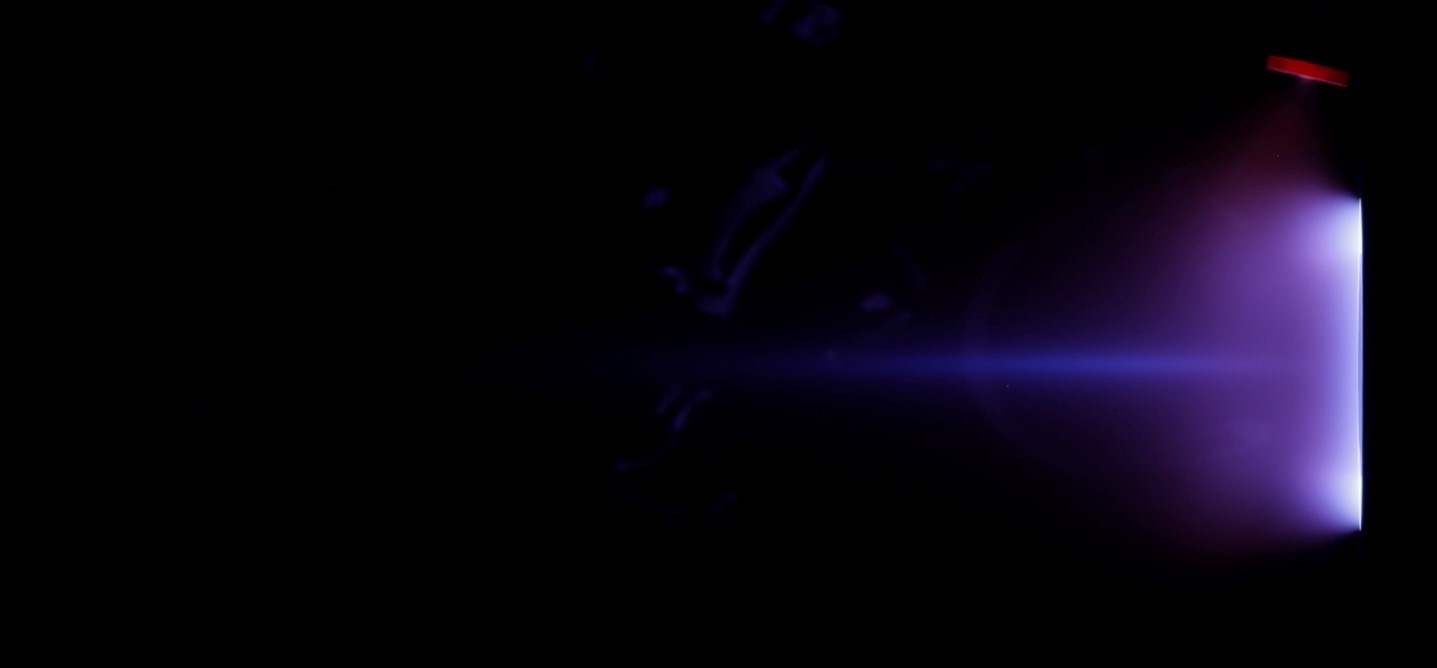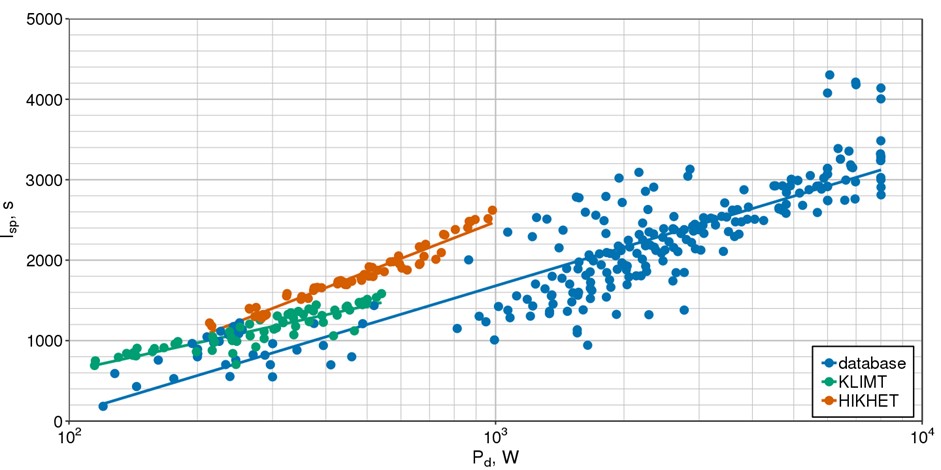HiPER High Power Electric propulsion: a Roadmap for future
EC/FP7 GA no. 218859
Duration: 1.10.2008 – 31.01.2012
It was a large project with 20 European entities coordinated by Alta SpA, in the scope of which a large 20 kW Hall Thruster with approximately 1 N of thruster was built. The task of the IPPLM was to create a numerical tool HETMAn for simulations of the thruster and to carry out numerical analyses in a wide range of operating parameters of the thruster. Validity of the model was confirmed by experimental results.
LµPPT Innovative Liquid Micro Pulsed Plasma Thruster system for nanosatellites
EC/FP7 GA no. 283279
Duration: 1.11.2011 – 31.10.2014
In the project coordinated by a Spanish company JMP INGENIEROS an innovative method of supplying PPT with liquid, non-volatile propellant was proposed. Two prototypes of laboratory thruster were built and a large increase of performance was demonstrated – almost double improvement of efficiency with respect to similar systems fueled with solid Teflon, with specific impulse of 1000 s and more. Full confirmation of the validity of the concept was obtained, thus ending the project at TRL 3.
Related publications:
(1) S. Barral, J. Kurzyna, E. Remírez, R. Martin, P. Ortiz, J. Alonso, S. Bottinelli, Y. Mabillard, A. Zaldívar, P. Rangsten, C. R. Koppel (2013). Development Status of an Open Capillary Pulsed Plasma Thruster with Non-Volatile Liquid Propellant. 33rd International Electric Propulsion Conference, IEPC-2013-291.
(2) S. Barral, J. Kurzyna, A. Szelecka, H. Rachubiński, E. Remírez, R. Martin, P. Ortiz, J. Alonso, Y. Mabillard, S. Bottinelli, A. Zaldívar, P. Rangsten, C. R. Koppel (2014). First Experimental Characterization of a Pulsed Plasma Thruster with Non-Volatile Liquid Propellant. Space Propulsion Conference 2014, 2980924.
(3) S. Barral, J. Kurzyna, A. Szelecka, H. Rachubiński, D. Daniłko, R. Martín, E. Remírez, P. Ortiz, J. Alonso, Y. Mabillard, S. Bottinelli, A. Zaldívar, P. Rangsten, C. R. Koppel (2015). Time-Of-Flight Spectrometry and Performance of a Pulsed Plasma Thruster with Non-Volatile Propellant. Joint Conference of 30th International Symposium on Space Technology and Science, 34th International Electric Propulsion Conference and 6th Nano-satellite Symposium, IEPC-2015-141/ISTS-2015-b-141.
(4) A. Szelecka, J. Kurzyna, D. Daniłko, S. Barral (2015). Liquid micro pulsed plasma thruster. NUKLEONIKA 60(2):257-261. doi: 10.1515/nuka-2015-0057.
(5) Z. Peradzyński, K. Makowski, J. Kurzyna (2019). Early stage of the discharge in ablative pulsed plasma thrusters. Plasma Sources Sci. Technol. 28, 024001. doi: 10.1088/1361-6595/aaf95e.
KLIMT Krypton Large Impulse Thruster
ESA/PECS GA no. 4000107746/3/Nl/KML
Duration: 1.03.2013 – 15.06.2016
Three subsequent laboratory versions of a 500 W krypton Hall Thruster were created. The tests demonstrated stable work and performance in line with devices of this size and power, both for krypton and xenon. TRL 3 was achieved.
Related publications:
(1) J. Kurzyna, D. Daniłko (2011). IPPLM Hall Effect Thruster – design guidelines and preliminary tests. 32nd International Electric Propulsion Conference, IEPC-2011-221.
(2) J. Kurzyna (2014). Numerical investigation of the Krypton Large IMpulse Thruster. Phys. Scr. 014051. doi: 10.1088/0031-8949/2014/T161/014051.
(3) J. Kurzyna, S. Barral, D. Daniłko, J. Miedzik, A. Bulit, K. Dannenmayer (2014). First Tests of the KLIMT Thruster with Xenon Propellant at the ESA Propulsion Laboratory. Space Propulsion Conference 2014, 2980923.
(4) J. Kurzyna, A. Szelecka, D. Daniłko, S. Barral, K. Dannenmayer, E. Bosch Borras, T. Schönherr (2016). Testing KLIMT prototypes at IPPLM and ESA Propulsion Laboratories. Space Propulsion Conference 2016, 3125256.
(5) A. Szelecka, J. Kurzyna, L. Bourdain (2017). Thermal stability of the krypton Hall effect thruster. NUKLEONIKA 62(1):9-15. doi: 10.1515/nuka-2017-0002.
(6) J. Kurzyna, M. Jakubczak, A. Szelecka, K. Dannenmayer (2018). Performance tests of IPPLM’s krypton Hall thruster. Laser and Particle Beams 36, 105–114. doi: 10.1017/S0263034618000046.
(7) A. Szelecka, M. Jakubczak, J. Kurzyna (2018). Plasma beam structure diagnostics in krypton Hall thruster. Laser and Particle Beams 36, 219–225. doi: 10.1017/S0263034618000198.
HIKHET – 0.5 kW class HET for operation at high voltage with krypton propellant
ESA/PLIIS GA no. 4000122415/17/NL/GE
Duration: 12.01.2018 – 30.04.2021
Project HIKHET – High Impulse Krypton Hall Effect Thruster (funded by the European Space Agency in the scope of Polish Industry Incentive Scheme programme), was aimed to develop a high specific impulse version of the IPPLM’s 500 W class Hall plasma thruster operated with krypton propellant.
 |
| Hall thruster fed with krypton and working in PlaNS Laboratory. |
Specific impulse, i.e. the impulse per one kilogram of the propellant, is a measure of how effectively the propellant available onboard of a satellite is utilized. Since almost all of the new satellites are equipped with a propulsion system which allows them to carry out orbital maneuvers to extend their mission and to finally deorbit, it is the amount of available propellant onboard which largely determines the lifetime of the satellite.
During the 3 years of the project, in PlaNS Laboratory the initial version of the thruster (developed in the scope of the earlier KLIMT project) was enhanced and extensively tested, new diagnostics of the emitted plasma beam were implemented (Faraday Cup and Retarding Potential Analyzer), and an entirely new thruster was designed relying on the results from magnetic field modelling and thermal simulations. The final version of the thruster was tested in a wide range of operating parameters (type of propellant, mass flow rate, discharge voltage, magnetic field strength), showing an increase of the specific impulse from 1400 s to 2600 s and simultaneous efficiency improvement from 20% to 34% (for krypton). Moreover, the new design resulted in operating temperature lower by 100oC and mass reduced by 30%. The achieved performance allows to compete with other Hall thruster of similar power, and makes the IPPLM’s thruster unique in the way of specific impulse production.
 |
| Specific impulse as a function of discharge power – comparison of KLIMT and HIKHET thrusters with other Hall thrusters described in literature (data for krypton). |
Related publications:
(1) J. Kurzyna, M. Jakubczak, A. Szelecka, A. Riazantsev (2019). Preliminary Tests of HIKHET Laboratory Model at IFPiLM. 36th International Electric Propulsion Conference, IEPC-2019-591.
(2) A. Szelecka, M. Jakubczak, A. Riazantsev, A. Jardin, P. Lubiński, J. Kurzyna (2021). Searching for chaotic behavior in the ion current waveforms of a Hall effect thruster. Space Propulsion Conference 2020+1, SP2020_#218.
(3) A. Szelecka, M. Jakubczak, A. Riazantsev, J. Kurzyna (2021), Study of plasma dynamics in HET relying on global thruster characteristics parameterized with discharge voltage, The European Physical Journal Plus 136:782, doi: 10.1140/epjp/s13360-021-01734-z.
(4) M. Jakubczak, J. Kurzyna, A. Riazantsev (2021). Experimental Verification of the Magnetic Field Topography inside a small Hall Thruster. Measurement Science Review 21, 5. doi: 10.2478/msr-2021-0021.
(5) A. Jardin, M. Jakubczak, A. Riazantsev, A. Jardin, J. Kurzyna, P. Lubiński (2022). Searching for Chaotic Behavior in the Ion Current Waveforms of a Hall Effect Thruster. Journal of Fusion Energy 41:20. doi: 10.1007/s10894-022-00331-x.
(6) M. Jakubczak, A. Riazantsev, A. Jardin, J. Kurzyna (2022). Experimental Optimization of Small Krypton Hall Thruster for Operation at High Voltage. 37th International Electric Propulsion Conference, IEPC-2022-360.
(7) A. Riazantsev, Z. Peradzyński, K. Makowski (2022). Parametric Study of Debye Sheath Emergence Using Kinetic Simulations. 37th International Electric Propulsion Conference, IEPC-2022-385.
(8) O. Cichorek, Z. Peradzyński (2025). High and low efficiency subregimes of breathing mode oscillations in Hall thrusters. Physics of Plasmas 32, 022113. doi: 10.1063/5.0232441.
Pulsed plasma thruster for nano and micro satellites
NCBR/POIR umowa nr POIR.01.01.01-00-0857/19
Duration: 01.04.2020 – 31.10.2023
Together with a Polish company Liftero Sp. z o.o. (formerly Progresja Space Sp. z o.o.), IFPiLM took the successful proof-of-concept of the liquid-fed pulsed plasma thruster and developed it further towards commercialization. Designed for nanosatellites, the whole propulsion unit had volume of only 0.5U (electronics and propellant tank included) and power consumption of about 2 W. The performance of the last version was: impulse bit of 18.8 μNs, specific impulse 410 s, thruster efficiency of 3.5% (at 1 J). The thruster successfully carried out almost 1.5 milion discharges.
 |
| Pulsed plasma thruster in 0.5U form and long-exposure photo of its discharge. |
Related publications:
(1) M. Jakubczak, A. Jardin, J. Kurzyna (2024). Analysis of composition and dynamics of the plasma plume emitted by a 1 J pulsed plasma thruster fed with polytetrafluoroethylene and determination of thruster efficiency components. Physics of Plasmas 31, 053501. doi: 10.1063/5.0189700.
(2) A. Riazantsev, M. Jakubczak, O. Cichorek, J. Kurzyna (2024) Side and front fast imaging of solid and liquid fed ablative pulsed plasma thruster’s discharge. Acta Astronautica 225, 583-594. doi: 10.1016/j.actaastro.2024.09.025.
(3) M. Jakubczak, A. Jardin, J. Kurzyna (2024) Plasma plume composition of a pulsed plasma thruster fed with perfluoropolyether, 38th International Electric Propulsion Conference, IEPC-2024-336.
(4) M. Jakubczak, A. Riazantsev, O. Cichorek, A. Jardin, J. Kurzyna, P. Drożdż, T. Palacz, M. Chuchla, R. Łabuz, G. Bywalec (2024) 1J-class Pulsed Plasma Thruster with Non-Volatile Propellant – Revisited. 38th International Electric Propulsion Conference, IEPC-2024-388.
(5) A. Riazantsev, M. Jakubczak, J. Kurzyna (2024) On Retrieval of Inductance and Resistance Dynamics from Experimental Waveforms of a 1 J-class PPT Discharge. 38th International Electric Propulsion Conference, IEPC-2024-797.
(6) M. Jakubczak, A. Riazantsev, O. Cichorek, A. Jardin, J. Kurzyna, P. Drożdż, T. Palacz, M. Chuchla, R. Łabuz, G. Bywalec (2025) Design and performance of a 1 J ablative pulsed plasma thruster fed with non-volatile liquid propellant. Acta Astronautica 228, 813-827. doi: 10.1016/j.actaastro.2024.12.039.
(7) M. Jakubczak, A. Jardin, J. Kurzyna (2025) Plume measurements of a 1 J ablative pulsed plasma thruster fed with non-volatile liquid propellant. Plasma Sources Science and Technology 34, 015010. doi: 10.1088/1361-6595/ada6fe.






